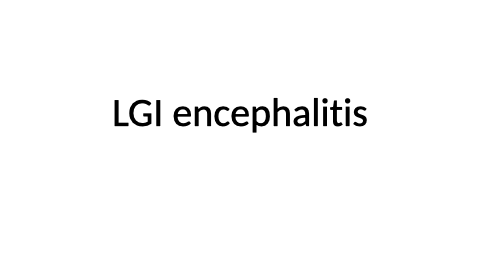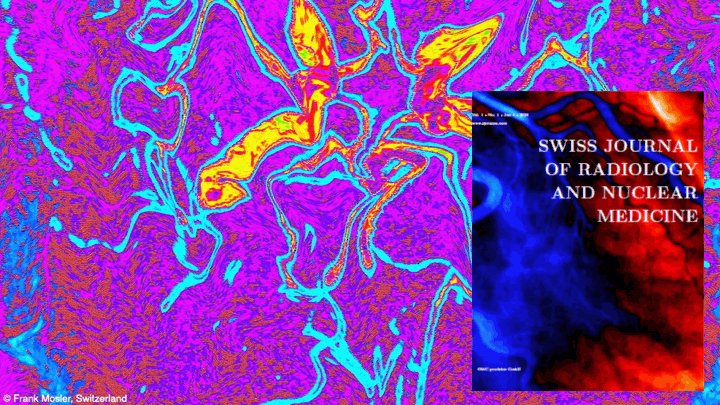A Sporadic Case of LGI1 Autoimmune Encephalitis Feigning as Basal Ganglia Stroke
Exhuming its Pathophysiologic Basis
DOI:
https://doi.org/10.59667/sjoranm.v24i1.16Keywords:
LG1encephalitis, autoimmunity, auto-antibodies, epilepsy, myoclonic seizures, cognitive dysfunction, sleep disturbances, steroidsAbstract
LG1 encephalitis is an immune mediated neurological disorder effecting temporal lobe and basal ganglia. The classic clinical syndrome comprises of myoclonic jerks of the ipsilateral upper arms, facial twitching, memory disturbances, behavioral disturbances and hyponatremia. With its overarching symptoms, it does not snug perfectly with either seizure or movement disorder. The main pathological basis is mass production of anti-LG1 auto-antibodies which strike the LG1 protein in the neuronal milieu and presynaptic membrane. On grounds of this immune mediated onslaught, LG1 protein injury transpires and slowing of signal conduction at the synaptic interface never ensues. In patients with aforementioned symptoms, a high degree of clinical suspicion necessitate MRI brain imaging which shows T2 hyperintensity in basal ganglia, temporal lobe and frontal lobe. This can be corroborated with assessing LGI antibody levels in the blood and CSF to monitor disease progression as well as treatment response. As soon as diagnosis is confirmed, intravenous corticosteroids, intravenous immunoglobulins or plasma exchange will reverse the epileptic activity and cognitive dysfunction. Long term immunosuppressive therapy is warranted as it is inclined to reduce the onset of temporal lobe epilepsy and hippocampal atrophy. Regular follow up to detect new clinical symptoms and brain lesions is recommended in these patients to reduce morbidity and mortality.References
1. Wang, M., et al. (2017). "Clinical features of limbic encephalitis with LGI1 antibody." Neuropsychiatr Dis Treat 13: 1589-1596. https://doi.org/10.2147/NDT.S136723
2. Jagtap, S. A., et al. (2023). "LGI1 Encephalitis: Autoimmune Epilepsy or Movement Disorder." Ann Indian Acad Neurol 26(5): 831-834. https://doi.org/10.4103/aian.aian_626_23
3. Iyer, R. S., et al. (2017). "Faciobrachial dystonic seizures result from fronto-temporo-basalganglial network involvement." Epilepsy Behav Case Rep 8: 47-50. https://doi.org/10.1016/j.ebcr.2017.06.001
4. Garant, D. S. and K. Gale (1983). "Lesions of substantia nigra protect against experimentally induced seizures." Brain Res 273(1): 156-161. https://doi.org/10.1016/0006-8993(83)91105-8
5. Turski, L., et al. (1990). "Substantia nigra regulates action of antiepileptic drugs." Brain Res 520(1-2): 232-239. https://doi.org/10.1016/0006-8993(90)91710-X
6. Fridley, J., et al. (2012). "Brain stimulation for the treatment of epilepsy." Neurosurg Focus 32(3): E13. https://doi.org/10.3171/2012.1.FOCUS11334
7. Rektor, I., et al. (2002). "Interictal and ictal EEG activity in the basal ganglia: an SEEG study in patients with temporal lobe epilepsy." Epilepsia 43(3): 253-262. https://doi.org/10.1046/j.1528-1157.2002.28001.x
8. Newton, M. R., et al. (1992). "Dystonia, clinical lateralization, and regional blood flow changes in temporal lobe seizures." Neurology 42(2): 371-377. https://doi.org/10.1212/WNL.42.2.371
9. van Sonderen, A., et al. (2016). "From VGKC to LGI1 and Caspr2 encephalitis: The evolution of a disease entity over time." Autoimmun Rev 15(10): 970-974. https://doi.org/10.1016/j.autrev.2016.07.018
10. Malter, M. P., et al. (2014). "Outcome of limbic encephalitis with VGKC-complex antibodies: relation to antigenic specificity." J Neurol 261(9): 1695-1705. https://doi.org/10.1007/s00415-014-7408-6
11. Bien, C. G. and C. E. Elger (2007). "Limbic encephalitis: a cause of temporal lobe epilepsy with onset in adult life." Epilepsy Behav 10(4): 529-538. https://doi.org/10.1016/j.yebeh.2007.03.011
12. Lalic, T., et al. (2011). "Human limbic encephalitis serum enhances hippocampal mossy fiber-CA3 pyramidal cell synaptic transmission." Epilepsia 52(1): 121-131. https://doi.org/10.1111/j.1528-1167.2010.02756.x
13. Lai, M., et al. (2010). "Investigation of LGI1 as the antigen in limbic encephalitis previously attributed to potassium channels: a case series." Lancet Neurol 9(8): 776-785. https://doi.org/10.1016/S1474-4422(10)70137-X
14. Morano, A., et al. (2020). "Faciobrachial Dystonic Seizures: The Borderland Between Epilepsy and Movement Disorders." Mov Disord Clin Pract 7(2): 228-229 https://doi.org/10.1002/mdc3.12884
15. Rodríguez Cruz, P. M., et al. (2016). "Alternating faciobrachial dystonic seizures in LGI1-antibody limbic encephalitis." Pract Neurol 16(5): 387-388. https://doi.org/10.1136/practneurol-2016-001375
16. Irani, S. R., et al. (2008). "IMMUNOTHERAPY-RESPONSIVE SEIZURE-LIKE EPISODES WITH POTASSIUM CHANNEL ANTIBODIES." Neurology 71(20): 1647-1648. https://doi.org/10.1212/01.wnl.0000326572.93762.51
17. Vincent, A. (2013). "Developments in autoimmune channelopathies." Autoimmun Rev 12(6): 678-681. https://doi.org/10.1016/j.autrev.2012.10.016
18. Gastaldi, M., et al. (2016). "Antibody-Mediated Autoimmune Encephalopathies and Immunotherapies." Neurotherapeutics 13(1): 147-162. https://doi.org/10.1007/s13311-015-0410-6
19. Andrade, D. M., et al. (2011). "Tonic seizures: a diagnostic clue of anti-LGI1 encephalitis?" Neurology 76(15): 1355-1357. https://doi.org/10.1212/WNL.0b013e3182152808
20. Flanagan, E. P., et al. (2015). "Basal ganglia T1 hyperintensity in LGI1-autoantibody faciobrachial dystonic seizures." Neurol Neuroimmunol Neuroinflamm 2(6): e161. https://doi.org/10.1212/NXI.0000000000000161
21. Boesebeck, F., et al. (2013). "Faciobrachial dystonic seizures arise from cortico-subcortical abnormal brain areas." J Neurol 260(6): 1684-1686. https://doi.org/10.1007/s00415-013-6946-7
22. Fauser, S., et al. (2005). "FDG-PET and MRI in potassium channel antibody-associated non-paraneoplastic limbic encephalitis: correlation with clinical course and neuropsychology." Acta Neurol Scand 111(5): 338-343. https://doi.org/10.1111/j.1600-0404.2005.00406.x
23. Wennberg, R., et al. (2018). "Frontal infraslow activity marks the motor spasms of anti-LGI1 encephalitis." Clin Neurophysiol 129(1): 59-68. https://doi.org/10.1016/j.clinph.2017.10.014
24. Irani, S. R., et al. (2010). "Antibodies to Kv1 potassium channel-complex proteins leucine-rich, glioma inactivated 1 protein and contactin-associated protein-2 in limbic encephalitis, Morvan's syndrome and acquired neuromyotonia." Brain 133(9): 2734-2748. https://doi.org/10.1093/brain/awq213
25. Barajas, R. F., et al. (2010). "Adult-onset drug-refractory seizure disorder associated with anti-voltage-gated potassium-channel antibody." Epilepsia 51(3): 473-477. https://doi.org/10.1111/j.1528-1167.2009.02287.x
26. Quek, A. M., et al. (2012). "Autoimmune epilepsy: clinical characteristics and response to immunotherapy." Arch Neurol 69(5): 582-593. https://doi.org/10.1001/archneurol.2011.2985
27. Shin, Y. W., et al. (2013). "VGKC-complex/LGI1-antibody encephalitis: clinical manifestations and response to immunotherapy." J Neuroimmunol 265(1-2): 75-81. https://doi.org/10.1016/j.jneuroim.2013.10.005
28. Majoie, H. J., et al. (2006). "Antibodies to voltage-gated potassium and calcium channels in epilepsy." Epilepsy Res 71(2-3): 135-141. https://doi.org/10.1016/j.eplepsyres.2006.06.003

Downloads
Published
License
Copyright (c) 2025 Sriharsha Kanuri MD PhD, David Teeple MD

This work is licensed under a Creative Commons Attribution 4.0 International License.
This license requires that reusers give credit to the creator. It allows reusers to distribute, remix, adapt, and build upon the material in any medium or format, even for commercial purposes.








